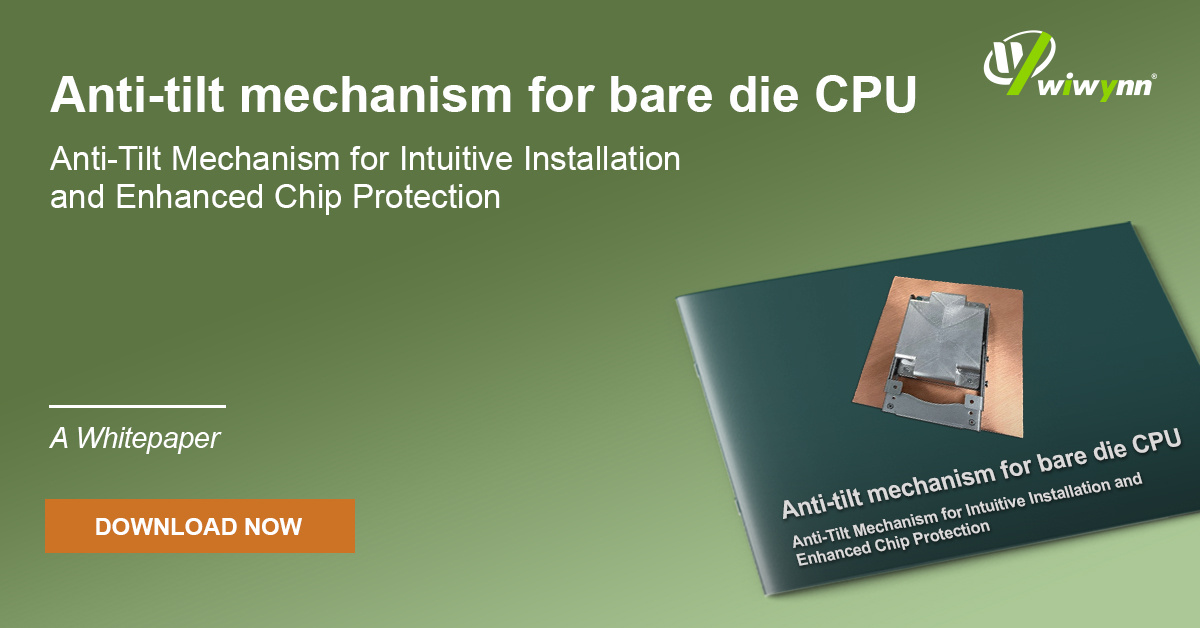1 min read
White Paper: AI Rack Management with Wiwynn UMS
This paper discusses the rapid expansion of AI workloads and the resulting transformation in data center infrastructure requirements. Traditional...

The bare die CPU, as an innovative product design, offers significant advantages over traditional designs across various stages, including product application, assembly, and production.
Traditionally, heat sinks are secured by tightening screws one by one at each corner. However, this method can apply excessive pressure on the bare die, potentially leading to chip damage. In our efforts to develop an anti-tilt mechanism for bare die CPUs, experiments confirmed that the new mechanism reduces uneven contact during heat sink installation, thus preventing chip damage during assembly. Overall, the anti-tilt mechanism design enables easier installation while providing enhanced chip protection.
Register to Download the whitepaper!

1 min read
This paper discusses the rapid expansion of AI workloads and the resulting transformation in data center infrastructure requirements. Traditional...

1 min read
Firmware updates are essential for the BMC system. Each device requires a unique update flow and utilizes different transport protocols, such as I2C...

1 min read
AI clusters using next-generation accelerators (e.g., NVIDIA GB200) push rack power density beyond 130 kW, making air cooling insufficient and...